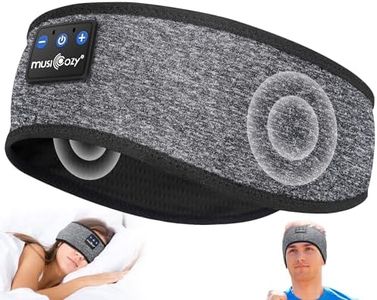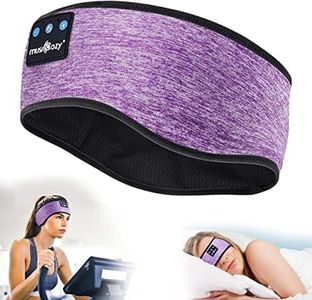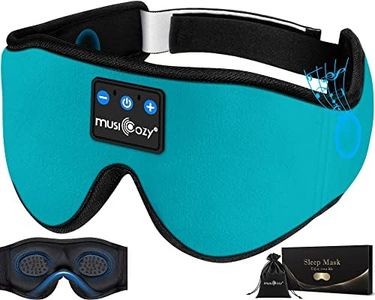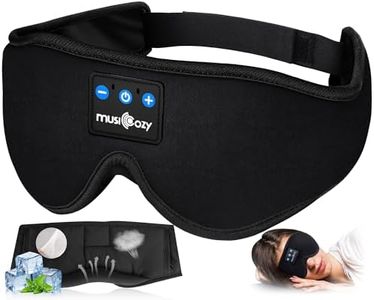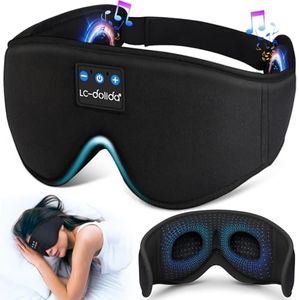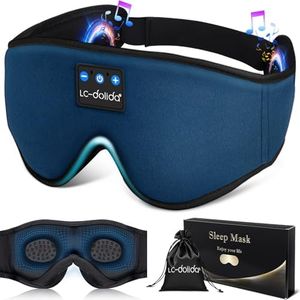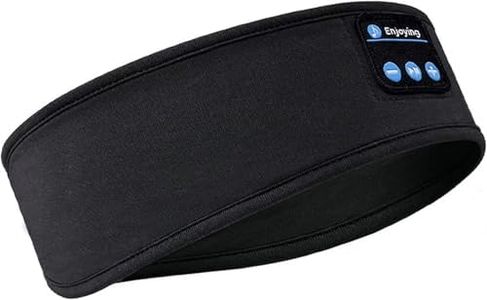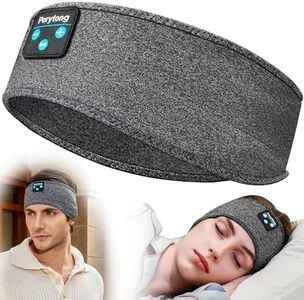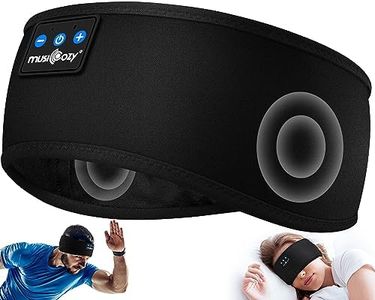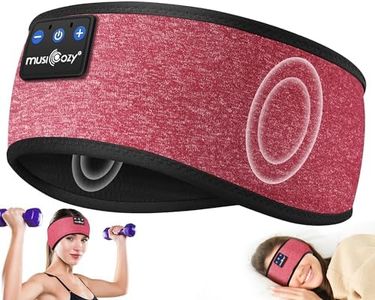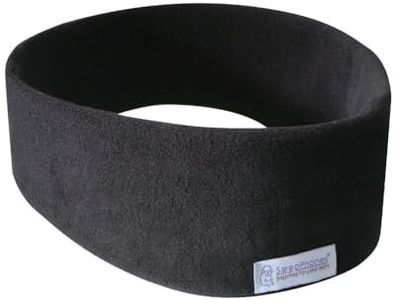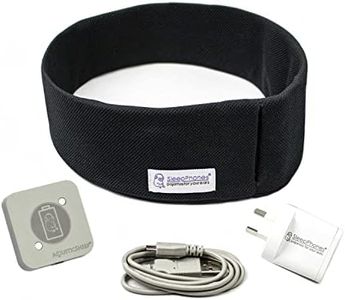We Use CookiesWe use cookies to enhance the security, performance,
functionality and for analytical and promotional activities. By continuing to browse this site you
are agreeing to our privacy policy
10 Best Sleeping Headphones
From leading brands and best sellers available on the web.Buying Guide for the Best Sleeping Headphones
Choosing sleeping headphones can make a big difference in how comfortably you fall—and stay—asleep while listening to music, podcasts, or white noise. When picking the right pair, think about how you sleep (on your side, back, or stomach), your sensitivity to pressure or bulk, and whether you want any extra technology involved. The ideal choice fits seamlessly into your bedtime routine without causing discomfort or getting in the way, so focus on comfort, practical features, and sound appropriate for quiet listening.Form FactorForm factor refers to the overall shape and style of the headphones, such as headbands, in-ear buds, or on-ear pads. This is important because it affects your comfort throughout the night, especially if you are a side-sleeper or move around while sleeping. Narrow headbands and thin, flat earbuds tend to work well for most users as they distribute pressure more evenly and are less likely to cause discomfort. To pick the right form factor, consider your primary sleeping position and personal comfort with things touching your ears or head.
Sound Isolation and LeakSound isolation means how well the headphones block external noises, while sound leak is how much others can hear the sound from your headphones. If you sleep in a noisy environment, you’ll benefit from better sound isolation, but if you share a bed or room, low sound leak will help avoid disturbing others. Softer, padded designs tend to block less noise but are comfier, while in-ear or snugly fitting models may offer better isolation. Choose based on whether you value a quieter environment or maximum comfort, and think about your surroundings.
Wireless or WiredThis spec refers to whether the headphones connect to your device with a cable (wired) or use Bluetooth (wireless). Wireless models eliminate the risk of getting tangled in cords overnight, which can be safer and more convenient, but they require charging. Wired models don’t need charging but can be less comfortable due to possible cord tangling. If you move around in your sleep a lot, wireless may be better. If you dislike having to keep things charged, wired might be preferable.
Battery LifeBattery life tells you how long wireless headphones can run before needing a recharge, which is crucial if you like to listen all night. Battery life can range from just a few hours to a full night or more. If you use headphones for short relaxation sessions, moderate battery life is enough; for all-night use or longer sleep cycles, opt for models that can last well over 8 hours to avoid interruptions.
Material and BreathabilityMaterial refers to what the headphones or headband are made of, affecting softness, heat retention, and breathability. If you get hot at night, breathable, moisture-wicking fabrics are best. Soft memory foam or stretchy fabric can improve comfort, especially for side-sleepers. Consider how sensitive your skin is and how warm your sleeping environment gets—choose materials that feel gentle and keep you comfortable through the night.
Control and Ease of UseControl and ease of use describe how you operate the headphones, such as changing the volume or skipping tracks. Simple, accessible controls ensure you don’t have to fumble around in the dark. Some models have in-line buttons or touch controls that are easy to find. Choose a design that feels intuitive for you, depending on how often you plan to adjust your audio during the night.
